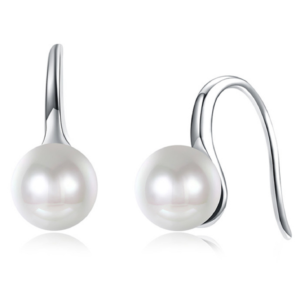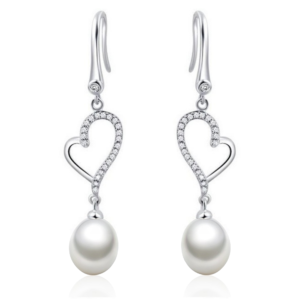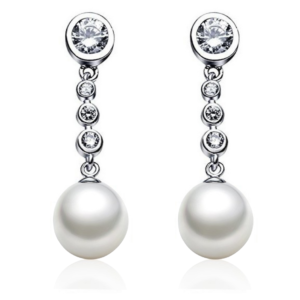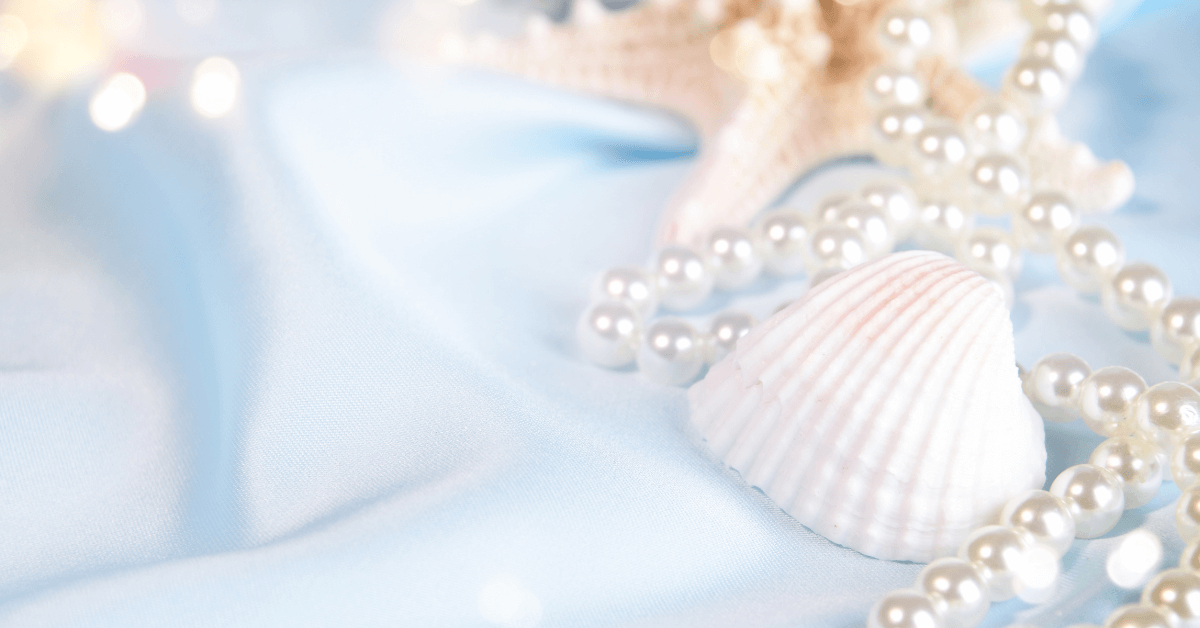
Pearl Grading Guide
(ABCs of Grading Pearls)
Let’s start by saying the pearl grading system is a MESS.
Seriously…, when you look around, every vendor, every farmer, every company, and even every auction house have their own grading systems they use to evaluate the quality and price of pearl jewelry.
There’s no universally standardized grading system use to evaluate pearls.
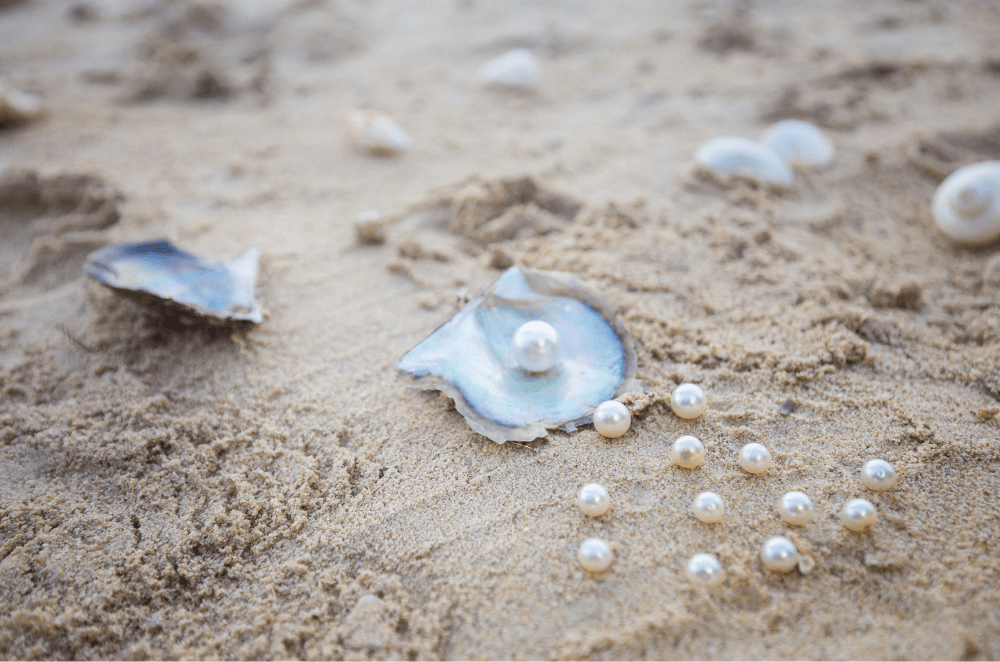
Solution? Learn how to assess the quality and value of the pearls.
Ok, I am not asking you to become a gemologist. You’ll just need to follow the 80-20 pareto principle and gain a basic understanding of the most widely accepted pearl grading system; A-AAAA grading system, A-AAA grading system and the A-D Grading Scale.
And this simple guide will teach you just that.
Pearl Value & Quality Factors
We like to reference to the cultured pearl value standards provided by the Gemological Institute of America (GIA), GIA 7 Pearl Value Factors™ as the bases when grading each of the pearls. Because it is the most reputable and simplest to understand.
Grading of pearls primarily hinges on these seven factors: size, shape, color, luster, surface quality, nacre quality, and matching (meaning how well pearls within a piece of jewelry match each other).
Pearl Size
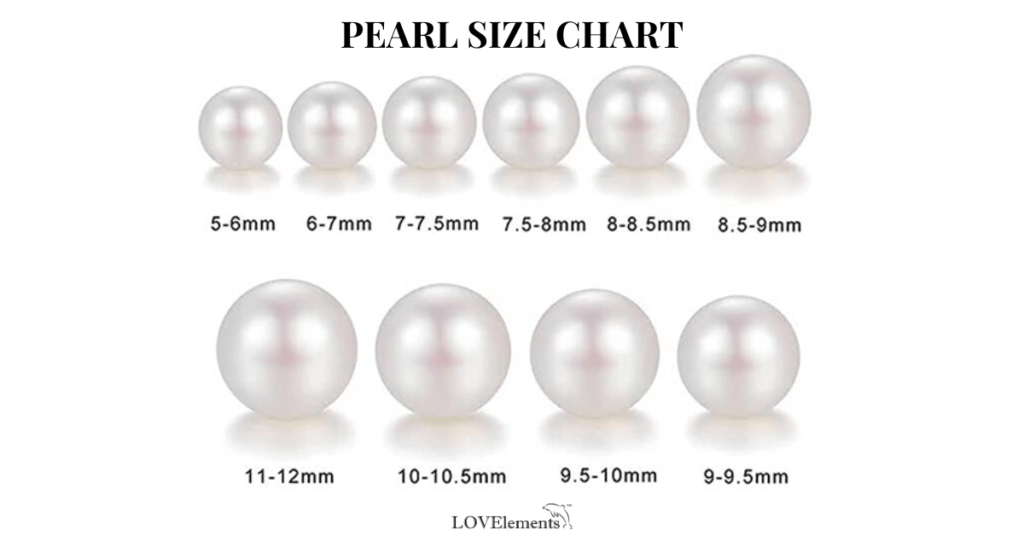
Pearl size is typically measured in millimeters using calipers. Gem quality pearls are often larger in size, increasing their value and desirability.
Pearl Shape
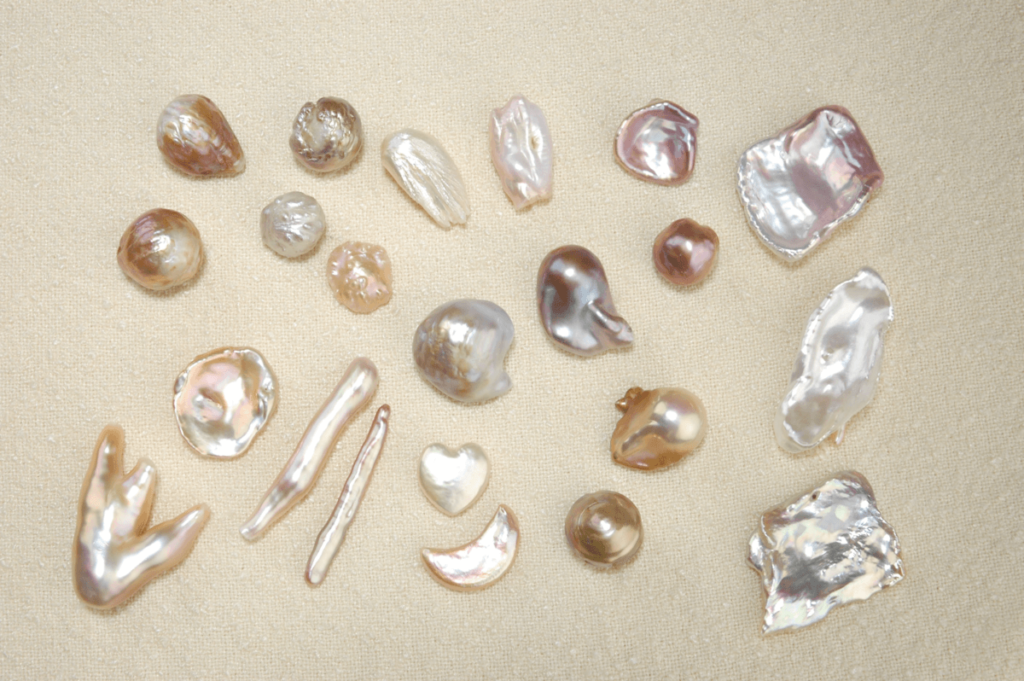
The shape of the pearl plays a significant role in its value. The most sought-after pearls are perfectly round. Akoya cultured pearls, known for their roundness, set the standard for this aspect of grading.
Luster
Luster is the measure of a pearl’s brilliance and reflectivity. High-quality pearls display a sharp mirror-like reflection due to their excellent luster. To determine a pearl’s luster, compare it against a Gem Pearl Master Comparison Set.
Pearl Color and Overtone
Color is the base shade of the pearl, while overtone is an additional hue that appears on its surface. High-quality Akoya pearls often have a white or pink body color with desirable overtones of rose or silver-gray.
Surface Blemishing
The presence of spots, flaws, or irregularities on the pearl’s surface can detract from its value. A flawless or minimally blemished surface indicates a higher quality pearl.
Nacre Thickness
Nacre thickness affects a pearl’s luster and durability. Thick nacre, composed of layers of calcium carbonate, results in pearls being more lustrous and less likely to exhibit wear or chipping over time.
Matching
Pearl matching refers to the similarity of pearls within a piece of jewelry, in terms of luster, color, size, and shape. For strands and sets, excellent matching is a sign of high quality.
Freshwater Pearl Grading
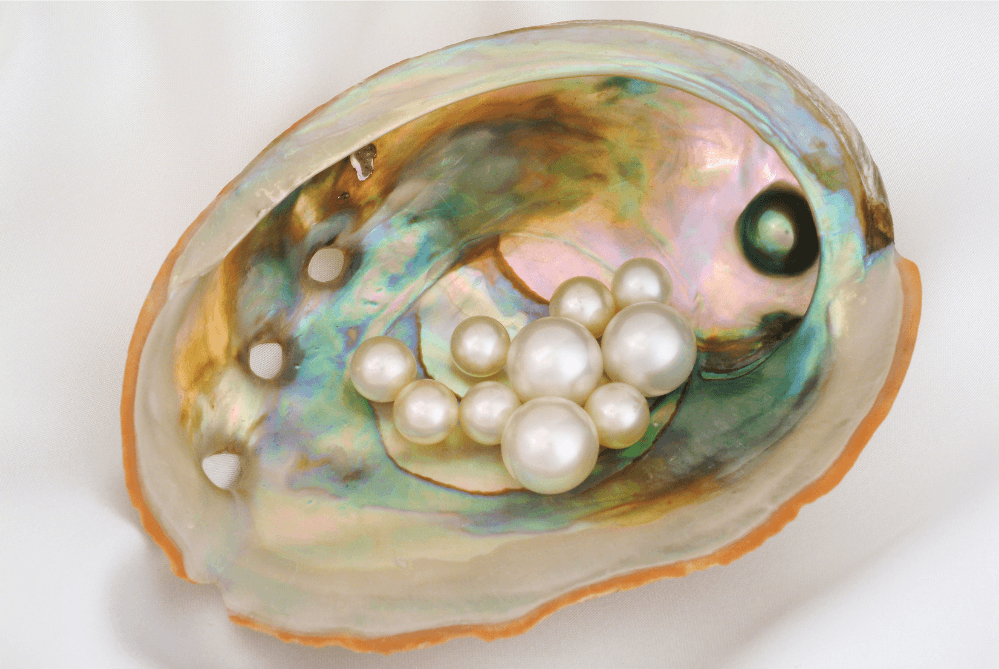
When you’re buying freshwater pearls, the grading system that is most commonly used is A-AAAA Grading System (A to AAAA) or the Chinese Pearl Grading System (Class I to Class IV) graded according to Surface, Luster, Matching and Shape (roundness and symmetry).
However, we will be using the A-AAAA Grading System which is more commonly used and easy to understand.
A-AAAA Grading System for Freshwater Pearls
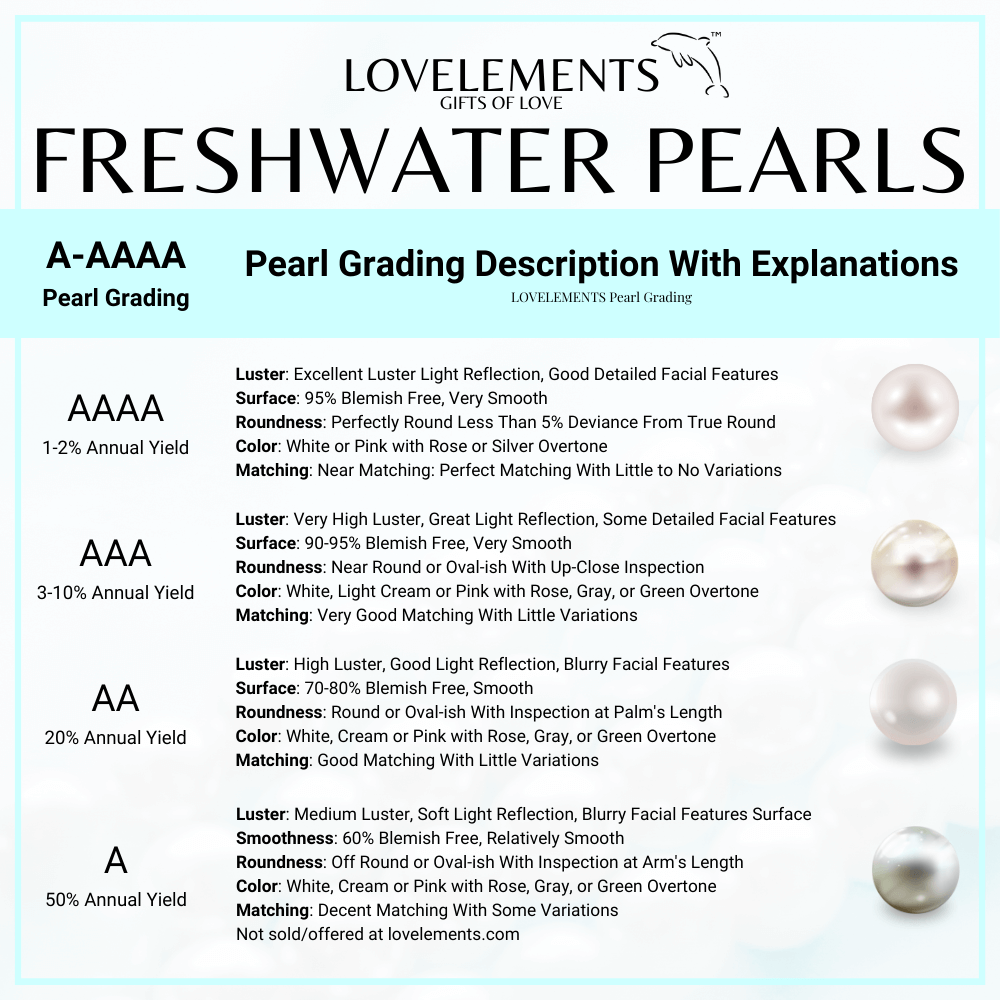
Freshwater Pearl‘s quality and value are mainly determined by luster, surface quality, color with overtone and symmetry in shape. Freshwater pearls are graded on a scale from A to AAAA, with AAAA being the highest quality.
AAAA Grade: Exuding exceptional luster with excellent light reflection and detailed facial features, these pearls flaunt a 95% blemish-free and very smooth surface. Their near-round shape with less than 5% deviation is accompanied by a color range of white or pink with a delicate rose or silver overtone.
AAA Grade: Radiating high luster with excellent light reflection and some detailed facial features, these pearls impress with a 90-95% blemish-free and smooth surface. Their near-round or oval-ish appearance upon close inspection is complemented by colors ranging from white, light cream, or pink with a rose, gray, or green overtone.
AA Grade: Showcasing good luster with pleasing light reflection and slight facial features, these pearls boast a 70-80% blemish-free surface with a smooth texture. Their round or slightly oval shape is discernible at arm’s length. Found in white, cream, or pink tones with rose, gray, or green overtones.
A Grade: Featuring moderate luster with soft light reflection and blurry facial features, these pearls exhibit noticeable imperfections with a 60% blemish-free and relatively smooth surface. Their slightly off-round or oval-ish shape is apparent when inspected closely at arm’s length. Available in white, cream, or pink hues with a rose, gray, or green overtone.
| Pearl Grading A-AAAA | Luster | Nacre Thickness | Surface Quality | Shape | Color & Overtone | Matching |
|---|---|---|---|---|---|---|
| AAAA | Excellent | Thick | Very Slightly Blemished | Perfect Round | White/Pink with Rose, Silver Gray Overtone | Excellent |
| AAA | Very High | Medium to Thick | Slightly Blemished | Near Round | White/ Cream/ Pink with Rose, Gray, Green Overtone | Very Good |
| AA | High | Medium | Slightly Blemished | Slightly Off Round | White/ Cream/ Pink with Rose, Gray, Green Overtone | Good |
| A | Medium | Thin | Noticeable Blemishes | Off Round | White/ Cream/ Pink with Rose, Gray, Green Overtone | Fair |
Freshwater Pearl Color: Redish Purple, Purplish Red, Red, Orangy Red, Reddish Orange, Orange, Yellowish Orange, Pink, Cream, White with Overtone
When considering Freshwater pearls check for:
- Pearl luster on the intensity and sharpness of the reflection
- Surface quality such as blemishes and spotting
- Perfect symmetry of the shape that are round or oval
- Body color of the pearl with noticeable overtone
Bear in mind, the above guide provides a framework to assess pearls, but beauty is subjective, and your personal preference should ultimately guide your choice.
While these grades are reliable, it’s important to note that the pearl grading is not standardized across the board. You can check with the seller to understand which grading system are they using. Having said so, we at lovelements.com use the A-AAAA Grading System to grade freshwater pearls.
Japanese Akoya Pearl Grading
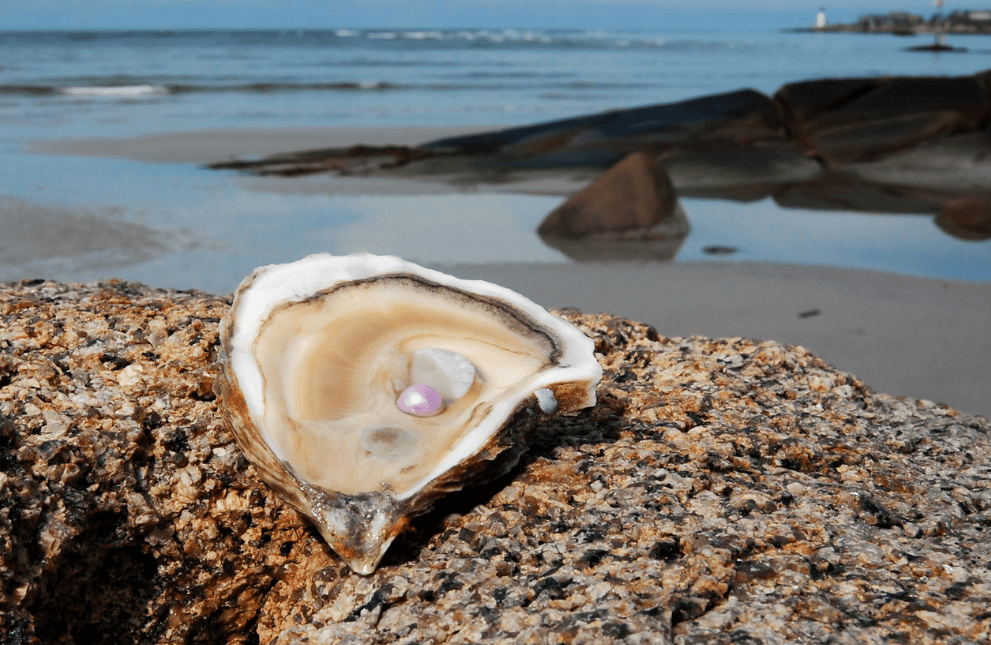
When selecting Japanese Akoya pearls, understanding their unique grading system is essential. This guides you in assessing quality and making an informed decision for pearl jewelry such as necklaces, bracelets, or earrings.
A-AAA Grading System For Akoya Pearls
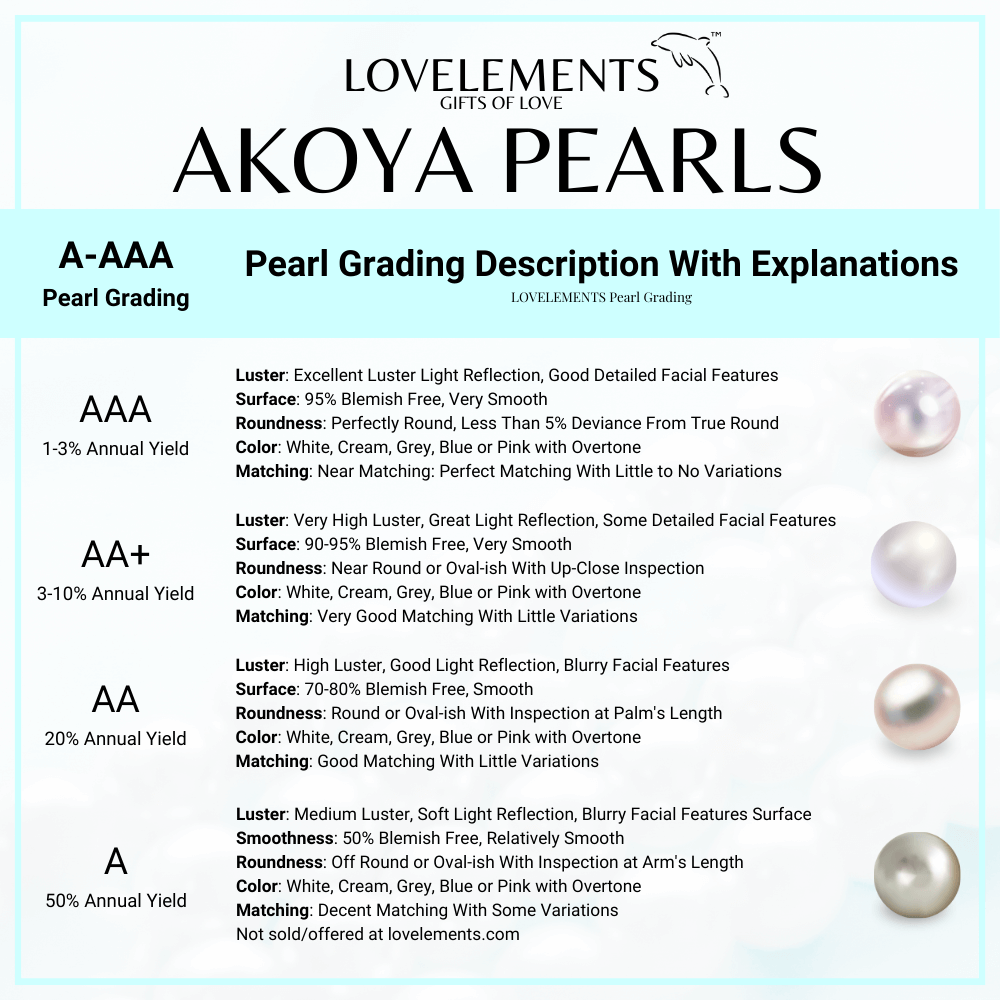
Akoya pearls quality and grades of each pearl are mainly determined by luster, surface quality, and symmetry in shape. Each pearls are graded on a scale from A to AAA, with AAA being the highest quality. Hanadama Grade on the other hand is added to be a even higher quality than AAA grade pearls, however, it is not as commonly used in the 4 level scale of A, AA, AA+ and AAA grade pearls.
Hanadama Grade: Considered above AAA, the Hanadama grade represents the crème de la crème of Japanese Akoya pearls. These pearls must meet stringent requirements, such as a minimum nacre thickness of 0.4mm, to be awarded a PSL certificate. Their luster is exceptional, with a mirror-like quality and great depth, making them truly stand out. If you’re seeking unparalleled beauty and quality, pearls with the Hanadama designation are your pinnacle choice.
AAA Grade: At the top of the standard system, AAA grade pearls boast a 95% or better surface quality, equating to very high to excellent luster where reflections are easily recognizable. For pearl earrings, you’d find cleanliness on the fronts and sides, and necklaces or bracelets will appear virtually immaculate to onlookers.
AA+ Grade: Going up the prestige level, AA grade pearls have a 90-95% clean surface. The luster is sharper and more defined, meaning reflections on the pearl surface are quite clear with minimal blurring. When you’re buying pearl earrings, the fronts will be clean, though a few inclusions on sides or backs are permissible. Necklaces and bracelets, too, will mostly appear blemish-free to the casual observer.
AA Grade: Moving up, AA grade pearls have a 70-80% clean surface. The luster is highly noticeable and more defined, meaning reflections on the pearl surface are relatively clear with low blurring. When you’re having an inspection of the pearl jewelry such as an earrings, the fronts will be relatively clean with some blemishes as well as on sides or backs. Necklaces and bracelets, too, will mostly appear blemish-free when look from an arm’s length.
A Grade: Your most basic level in the Japanese Akoya pearl grading scale. Pearls at this grade are notable for acceptable luster and nacre thickness. They will have surface imperfections visible upon close inspection.
| Pearl Grading A-AAA | Luster | Nacre Thickness | Surface Quality | Shape | Color & Overtone | Matching |
|---|---|---|---|---|---|---|
| AAA | Excellent | Thick | Very Slightly Blemished | Perfect Round | White/Pink with Overtone | Excellent |
| AA+ | Very High | Medium to Thick | Slightly Blemished | Near Round | White/ Cream/ Pink with Overtone | Very Good |
| AA | High | Medium | Some Blemished | Slightly Off Round | White/ Cream/ Pink with Overtone | Good |
| A | Medium | Thin | Noticeable Blemishes | Off Round | White/ Cream/ Pink with Overtone | Fair |
Akoya Pearl Color: White, Cream, Gold, Gray, Blue with Overtone
The grades outlined above adhere to the Japanese standard grading system and are jewellers who subscribe to the Mikimoto grading.
When considering Japanese Akoya pearls check for:
- Pearl luster on the intensity and sharpness of the reflection
- Surface quality such as blemishes and spotting
- Perfect symmetry of the shape that are round or oval
- Body color of the pearl with noticeable overtone
As you look into selecting the perfect Japanese Akoya pearls, keep in mind that grading can vary from vendor to vendor. We at lovelements.com do not offer any pearls below AA+ grade due to customer satisfaction and quality of the pearls.
Tahitian and South Sea Pearl Grading
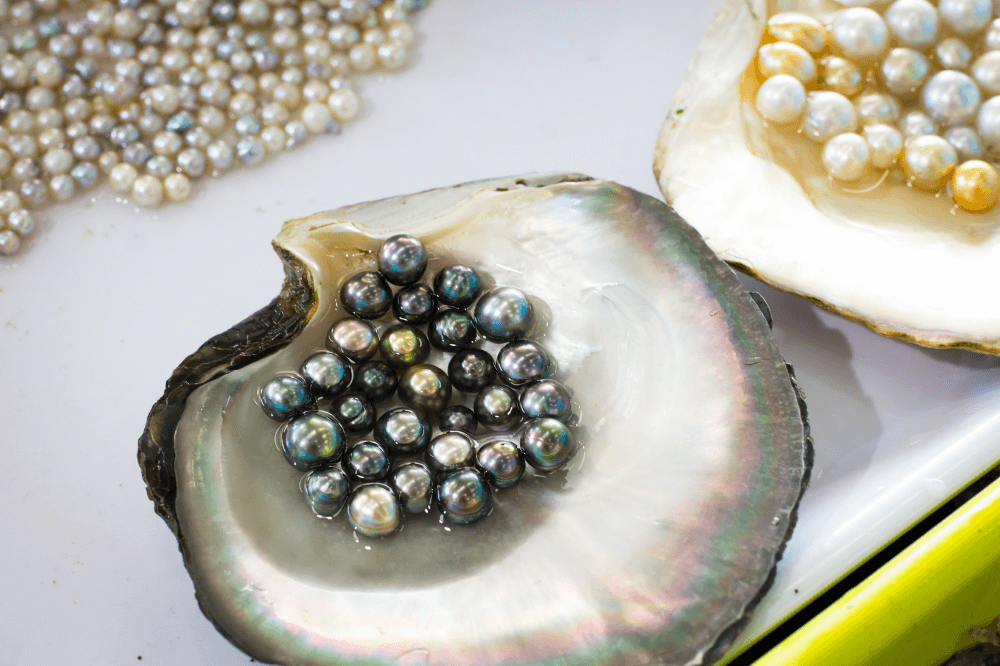
When you’re assessing the quality of Tahitian and South Sea pearls, it’s crucial to understand the grading systems in place. These pearls are renowned for their luster and large sizes, making them highly valued gemstones in the jewelry market.
A-D System For Tahitian and South Sea Pearl (A-AAA Grading System Equivalent)
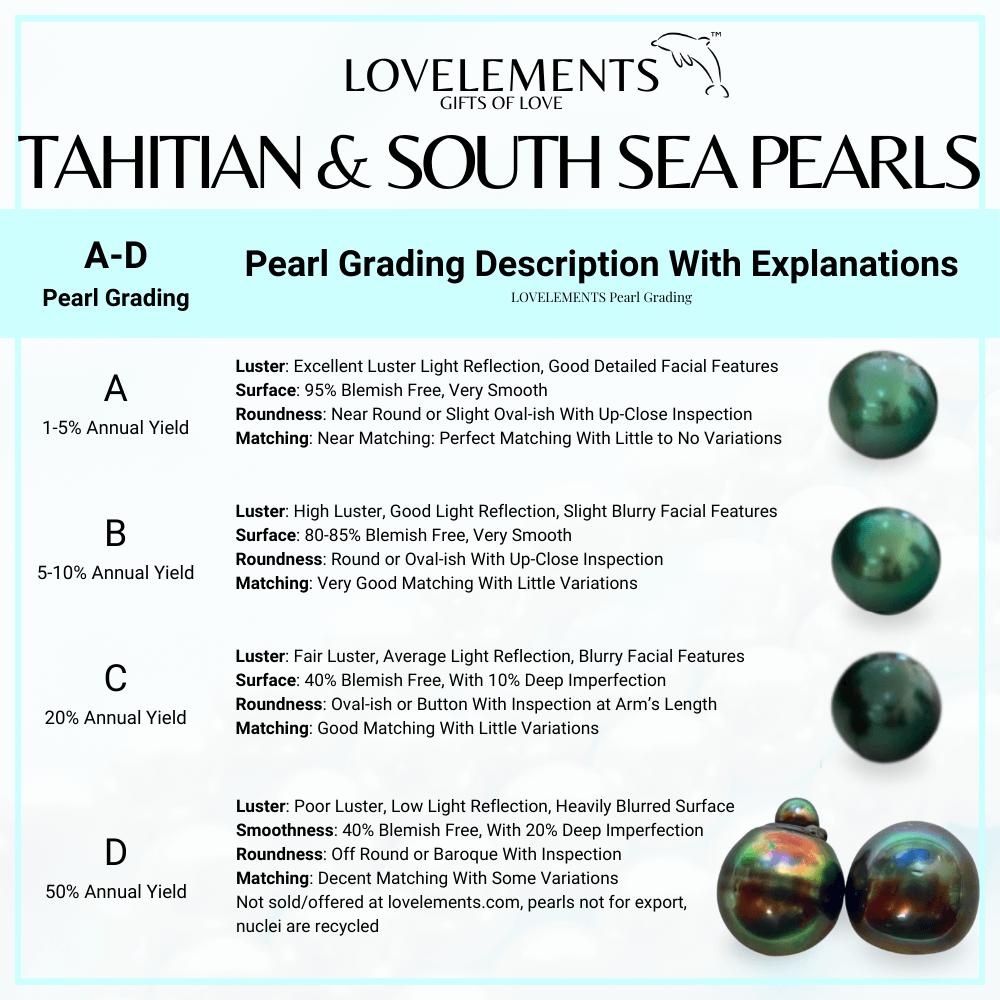
Tahitian pearls and South Sea pearls are considered high grade gems and are graded on their color’s depth and saturation. These exotic pearls are graded using A-D Grading Scale which is equivalent to A-AAAA Grading System.
A Grade: Exceptional luster featuring strong light reflection and detailed facial features, a 95% blemish-free and very smooth surface, near-round or slightly oval-shaped with up-close inspection.
B Grade: High luster with good light reflection and subtle blurry facial features, 80-85% blemish-free and smooth surface, oval-ish appearance upon up-close inspection.
C Grade: Moderate luster with average light reflection and slightly blurry facial features, 40% blemish-free surface with 10% deep imperfections, off-round, button, or drop shapes visible at arm’s length.
D Grade: Poor luster with low light reflection, featuring a heavily blurred surface. With 40% blemish-free and 20% deep imperfections, these pearls display off-round or baroque shapes under inspection. It’s important to note that they are not available for sale or export, as their nuclei are recycled.
| Pearl Grading A-D | Luster | Nacre Thickness | Surface Quality | Shape | Matching |
|---|---|---|---|---|---|
| A | Excellent Luster | Thick | Very Slightly Blemished | Perfect Round | Excellent |
| B | High Luster | Medium to Thick | Slightly Blemished | Oval-ish Round | Very Good |
| C | Good Luster | Medium | Noticable Blemished | Button/Drop Off Round | Good |
| D | Low Luster | Thin | Deep Blemishes | Baroque Off Round | Fair |
Tahitian Pearl Color: Yellowish Green, Green, Blueish Green, Blue Green, Green Blue, Greenish Blue, Blue, Violet, Purple
South Sea Pearl Color: Orangy Yellow, Yellow, Greenish Yellow
The A-D Grading system is also known as the “Tahitian System” in French Polynesia, it is the standard used by pearl farmers for Tahitian and South Sea pearls. It parallels the A-AAA grading scale,
When considering Tahitian pearls or South Sea pearl, check for:
- Pearl luster
- Surface quality such as blemishes
- Thickness of their nacre.
Tahitian pearls, especially those termed Tahitian black pearl or Tennyo, come in a mesmerizing range of natural dark shades.
South Sea pearls are often celebrated for their silvery-white to golden hues.
How to Choose Your Graded Pearl Jewelry
As you interact with different vendors and review gem grade pearls, remember that AAAA pearls or AAA pearls—the highest quality—should display a nearly flawless surface and outstanding luster, turning them into perfect centerpieces for a pendant or a string of pearls.
Trustworthy jewelers will often provide clear details on how they assess each pearl, ensuring the price you pay matches the pearl value you receive. At LOVELEMENTS, we focuses on freshwater pearls and Akoya pearls, using only AAA Grade or AA+ Grade pearls, following the A-AAAA Grading System.
- Freshwater pearls and saltwater Akoya pearls are not only beautiful and elegant, they are highly popular due to their white and pink hues with rose, silver and cream overtone.
- If you like a more exotic look, saltwater pearls like “South Sea Pearls” or “Tahiti Pearls,” can signify prestigious quality and contribute to a pearl’s uniqueness and worth.
Remember, a pearl’s value is also influenced by other factors like matching and nacre thickness. Use these details to your advantage to select pearls that meet your expectations for quality and price.
Navigate the market with this knowledge, and you’re more likely to procure pearls that truly reflect your taste and investment.
-

-
 Product on salePrecious Love Natural Pearl EarringsOriginal price was: $89.00.$69.00Current price is: $69.00.
Product on salePrecious Love Natural Pearl EarringsOriginal price was: $89.00.$69.00Current price is: $69.00. -


